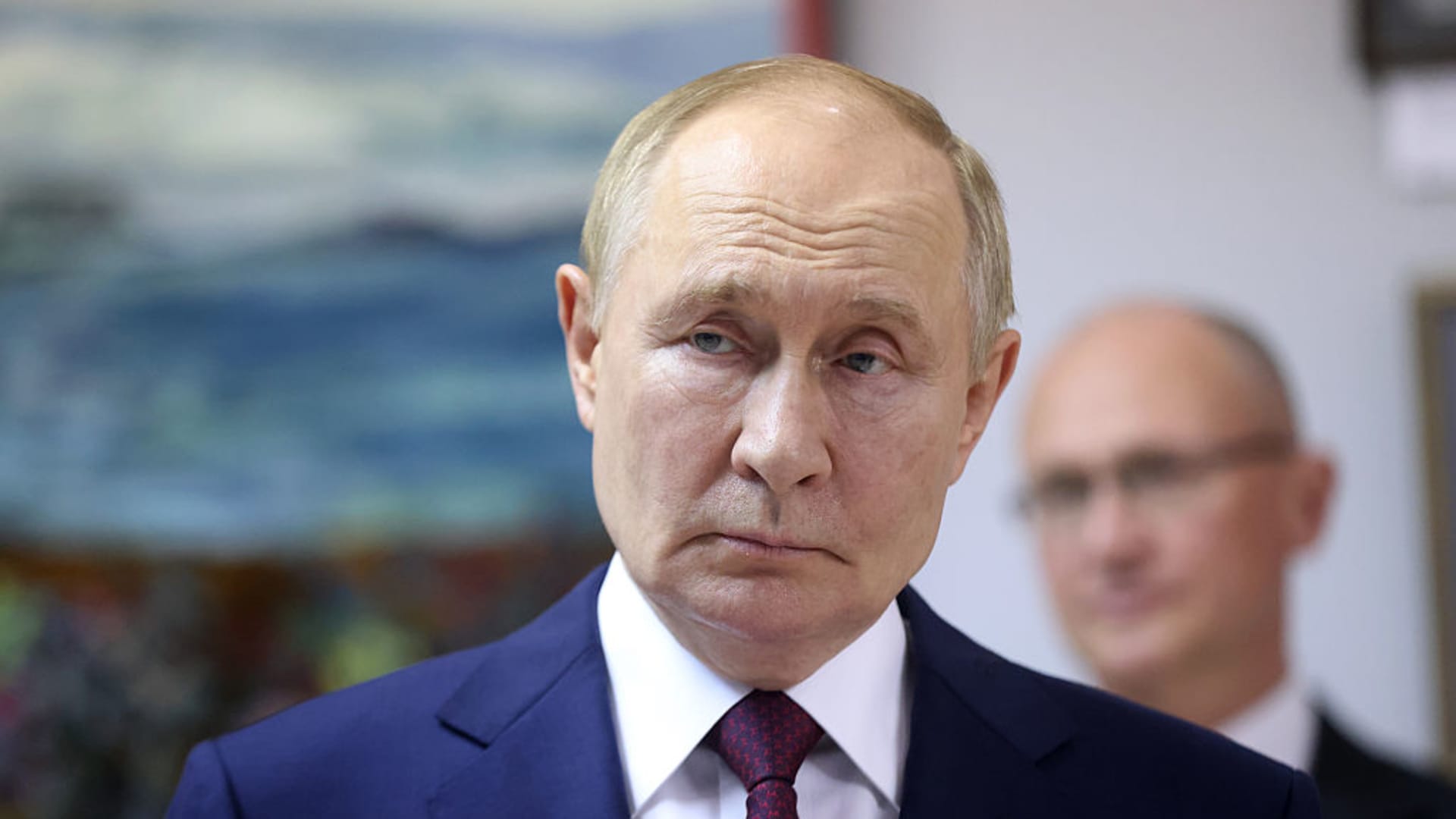Russian President Vladimir Putin (L) observes an exhibition as Presidential Deputy Chief of Staff Sergey Kiriyenko (Kirienko) (R) looks on while visiting the All-Russian Scientific Research Institute Of Experimental Physics on August 22, 2025 in Sarov, Russia.
Contributor | Getty Images News | Getty Images
Russia’s suspected drone attacks on Poland are widely seen as part of a “salami-slicing” strategy designed to test the West’s resolve.
Salami-slicing, in geopolitical terms, refers to the process of taking a series of incremental steps to further one’s strategic position, without provoking a major counter response.
Russian President Vladimir Putin is said to have frequently deployed this tactic to probe NATO’s defensive alliance, with analysts citing the recent violation of Estonia’s airspace, the quiet expansion of Russia’s border further into Georgia and the invasion of Crimea in 2014.
Moscow’s unprecedented violation of Polish airspace is said to be yet another salami-slicing example.
In the early hours of Wednesday, Poland said it scrambled its own and NATO aircraft to take down some of the 19 Russian drones that entered its airspace. It marked the first such instance since Russia’s full-scale invasion of Ukraine in February 2022.
Western allies swiftly condemned what they described as a deliberate provocation, while Russia’s Defense Ministry said it did not plan to attack any targets in Poland.
The Kremlin, meanwhile, has said it won’t be making any further comment on the situation, dismissing statements by Poland and other European countries about the drone incursion into a NATO ally as “nothing new.”
The Russian Embassy in London and Russia’s Foreign Ministry did not immediately respond to CNBC’s request for comment.

Benjamin Godwin, partner at risk consultancy PRISM Strategic Intelligence, said it has been quite clear that Russia’s war games strategy is to prod, push and test the West.
Part of the problem for NATO, Godwin said, is that it has long been evident that the defensive alliance does not want to get into a direct conflict with Russia, which in turn, has created an asymmetric effect for Russia.
“We’ve seen incursions, for example into Estonian airspace, obviously this incursion into Poland [and] we’ve seen electronic warfare all across Europe,” Godwin told CNBC’s “Europe Early Edition” on Friday.
“So, Russia is able to sort of escalate in these very, as we say in the U.K., salami-slicing ways and NATO has proven incapable so far in responding in any effective way to stop these efforts.”
NATO Secretary General Mark Rutte on Wednesday said a full assessment of Russia’s drone incursion into Poland is ongoing, adding that he was “really impressed” with how allies responded.
Testing tactics
In the wake of Russia’s drone incursion into Poland, NATO allies have taken steps to bolster defenses on Europe’s eastern flank, touted the prospect of further economic sanctions and convened an emergency U.N. Security Council meeting for Friday.
Analysts, however, have suggested that only a robust political and military response will be enough to deter Putin.
Godwin, for instance, called on NATO to rethink its defensive posture and the kind of assets that it deploys on Europe’s eastern flank.
Firefighters extinguish a fire on burning school after Russian drone attack on September 10, 2025 in Kramatorsk, Ukraine.
Global Images Ukraine | Global Images Ukraine | Getty Images
Oksana Nechyporenko, a nonresident senior fellow with the Atlantic Council’s Eurasia Center, warned that the softer the West’s reaction to Russia’s violation of Polish airspace, the harder the next blow will be.
“Ukrainians have been saying for years that Putin is not only waging war against Ukraine, but against the West—Europe in particular,” Nechyporenko said.
“He is simply testing tactics, always using the ‘salami strategy’: he tries something outrageous, waits for the world’s reaction, and if there is none, he pushes further,” she added.
Poland’s Tusk to Trump: It wasn’t a mistake
U.S. President Donald Trump on Wednesday offered an ambiguous response to Russia’s drone incursion into Poland this week.
“What’s with Russia violating Poland’s airspace with drones? Here we go!” Trump said in a social media post, without elaborating any further.
The U.S. president followed up his comments on Truth Social by telling reporters at the White House that Russia may have made a mistake.
“It could have been a mistake, but regardless, I’m not happy about anything having to do with that whole situation,” Trump said on Thursday.
Polish Prime Minister Donald Tusk appeared to take exception to Trump’s latest remarks. In a social media post, Tusk said on Friday: “We would also wish that the drone attack on Poland was a mistake. But it wasn’t. And we know it.”
Trump has previously asked the EU to hit China and India with tariffs of up to 100% over the countries’ Russian oil purchases, seeking to cut off a major source of revenues funding Putin’s war machine.





